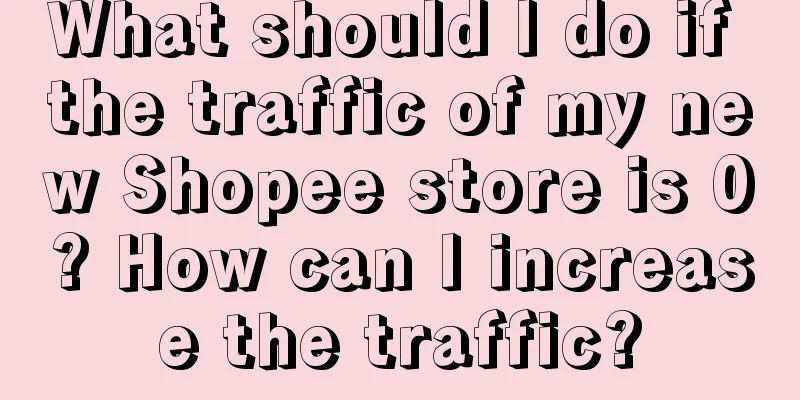Decoding CJO: The next frontier of connected experiences

More than 10 years ago, the focus of marketing was on how growth hackers could use the AARRR model (Acquisition, Activation, Retention, Revenue, Referral) to drive and accelerate the growth of a business. We believed that if we attracted enough eyes in the AARRR funnel, we would achieve satisfactory conversions. However, we are now in an era of touchpoint explosion. In August 2023, Sensors Data released a survey on customer journey orchestration. The survey data showed that more than 92% of companies have observed an increase in the number of customers through digital channels in the past year, and more than 86% of companies have found that they are facing new and changing customer journeys. However, when asked about the actual implementation of their company’s customer experience strategy, nearly half of the companies believed that the effectiveness of their strategy implementation was average. This feedback highlights the urgency for companies to address the user experience and reminds us that traditional marketing campaigns, offers and advertising are no longer enough. These strategies exist in isolation, but the customer journey does not, it can move backward, forward, and across digital and offline channels. Therefore, in this ever-changing marketing environment, companies are re-examining the way they interact with their target audiences. We are welcoming a brand new concept - Customer Journey Orchestration (CJO). 1. What is CJOGartner, an internationally renowned organization, defines CJO as organizing a set of recommended interactions throughout the customer lifecycle to respond to or create customer signals. Its essence is the management of customer interaction experience throughout the customer lifecycle, emphasizing personalized, omni-channel consistent experience. 2. CJO Development HistoryThe evolution of CJO can be divided into three stages. Each stage keeps pace with the changes of the times and provides solutions to the core problems faced by enterprises. In the 1.0 stage, the pre-digital era, mainstream touchpoints were concentrated in offline stores and branches. Companies mainly used traditional media such as television and posters as marketing channels, and interactions with consumers tended to be face-to-face or over the phone. Entering the 2.0 digital era, transactional businesses began to migrate online. Enterprises interacted with consumers through channels such as banners, emails, and online customer service. The cross-channel nature of the customer journey made it more challenging to connect the various stages of customer interaction. At this stage, manual processes began to be replaced by activity management platforms, but this was more used for promotional activities rather than promoting customer journey experience. Subsequently, with the advent of the 3.0 omni-domain era, the traffic dividend has reached its peak, and transaction functions have been embedded in various touchpoints such as apps, smart TVs, and social media. The explosive growth of channels has brought new opportunities and challenges to cross-channel and device interactions. Enterprises have increased their demand for omni-channel customer journey management and have begun to implement and deploy customer journey orchestration platforms to gain an in-depth understanding of customer journeys, achieve interaction based on intelligent optimization, and provide customers with a consistent experience. CJO was first described by Responsys (acquired by Oracle in 2013) about 10 years ago in The Rise of Marketing Orchestration, an attempt to separate the development of journey building technology from marketing automation technology. In the North American market, many marketers have had at least 10 years of experience in event-triggered marketing technology. The challenge they face is actually how to get more benefits from it. We believe that the transition to a marketing world that is primarily triggered or driven by real-time actions will rely primarily on a relatively young segment of the marketing world, CJO. To the extent that we can start with activities at one end, through multi-step journeys in the middle, and then to individual interactions orchestrated by predictive algorithms, this is called the "next best action." 3. Differences between CJO and Marketing Automation/Campaign ManagementCampaign management is defined as the process of planning, designing, executing and analyzing marketing activities. Its key feature is to achieve corporate goals by conveying information to as many audiences as possible, usually within a predetermined time period, through a series of organized tasks or activities to achieve a specific business goal or result, relying on pre-screened and defined customer segments. This approach pays more attention to efficiency, cost control and consistency. Through marketing automation, campaign management can simplify and enhance the process of interaction between enterprises and customers, thereby helping enterprises reduce repetitive tasks and improve the output of marketing teams. In contrast, CJO is more comprehensive and advanced. It focuses on customer needs, feelings and satisfaction, and puts customer experience at the core. CJO runs through all stages of interaction between enterprises and customers, triggering and providing interactions for individuals in real time. Journey orchestration runs continuously throughout the process and is triggered in real time based on customer behavior. Unlike pre-arranged batch interactions, CJO focuses more on individual needs and goals. It describes in detail the customer's complete experience from understanding the brand, product or service, to final purchase and use, and even feedback and recommendation. IV. The Value of CJOCJO brings a new and crucial interaction mode to enterprises and audiences. It is designed to respond to changing customer behaviors in real time and help brands provide flexible adaptability. Incorporating CJO into business strategy brings many benefits to enterprises. McKinsey's research shows that "if an enterprise can do its best to optimize the customer journey, it can not only increase the company's customer satisfaction by an average of 15%, but also reduce customer service costs by 20%, while increasing revenue by 15%." The results of the questionnaire survey show that companies believe that the three greatest values that CJO can bring to the company are improving user experience, helping companies personalize products/services/experiences, and building a customer-centric corporate culture. It can be seen that optimizing the customer journey is the key to improving business performance, user experience and success. Enterprises need to use CJO to connect various touchpoint business processes to create a consistent customer experience across all channels. Roland Berger also predicts that the importance and leading position of the customer experience department in enterprises will continue to increase in the future, thereby helping enterprises stand out in satisfying personalized customer experiences. At present, the market is gradually accepting the concept of CJO. At least in the North American market, Gartner's survey data shows that 94% of marketing technology leaders are planning or have already implemented journey orchestration in the next two years, and 55% of them believe that this is the most critical task they need to solve in 2023. Yet many businesses still struggle because building these journeys is not easy. Many marketers think they need to build complex and large multi-step journeys, when in reality, it is more important to create more content, let the algorithms figure out the paths through this space of content and interactions, and determine which interactions are truly valuable through multi-touch attribution. Author: Sensors Data |
<<: 6 steps for beauty industry brands to create a high-conversion private domain
>>: An in-depth review of Pinduoduo’s rise
Recommend
Live e-commerce "kills" 618
Under the general trend of the integration of cont...
How to apply to open a store on Doudian? Super complete Doudian store opening skills sharing
With the booming e-commerce industry, more and mor...
How to ship goods through Taiwan Shopee local account? What is the method?
Today, I will introduce you to the content of open...
Do consumers prefer "small favors"? Four keys to help you master the era of cost-effectiveness
Amid economic uncertainty, consumers prefer “small...
Can two Shopify stores be bound to one address? FAQ
Cross-border e-commerce is now the first choice fo...
The character of "profiteer" is well-established, with 1 million followers in 7 days
"Swindlers" sell products with double-di...
Merchants who have successfully run group buying on Douyin are now taking advantage of Kuaishou
Local life has gradually become one of the key are...
WeChat secretly updated! This Chinese New Year limited function is now available
WeChat's limited-time Chinese New Year feature...
Live streaming e-commerce has entered its real second half
With the end of 618, major platforms have also rel...
How to receive payment on eBay? How to set up payment method?
As an eBay seller, you must first think about how ...
What is Amazon TSFC association? How long does it take for the video certification results to be released?
Amazon is a cross-border e-commerce platform. Many...
Get these 5 core points right and your products will become a big hit on Xiaohongshu!
On Xiaohongshu, a marketing platform full of poten...
Announcement on the launch of DHgate Russian Standard Special Line (General)-IML
In order to provide you with a better logistics ex...
Xiaohongshu's autumn promotion incentives are online, come and share the traffic
Xiaohongshu's autumn promotion incentives are ...
Is Amazon Prime membership 188? Is Prime membership cost-effective?
Amazon, as a global e-commerce giant, has won the ...









